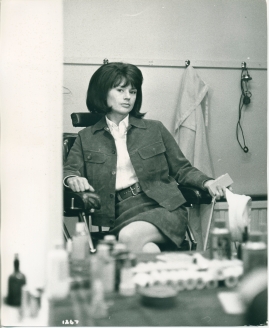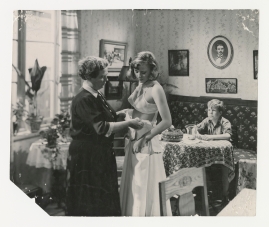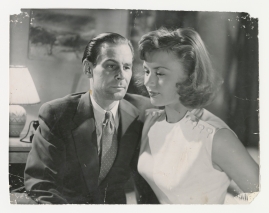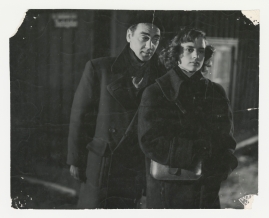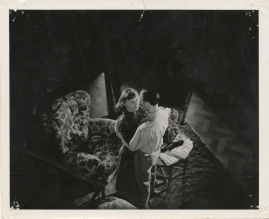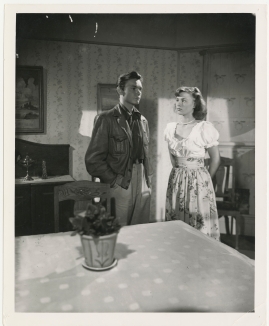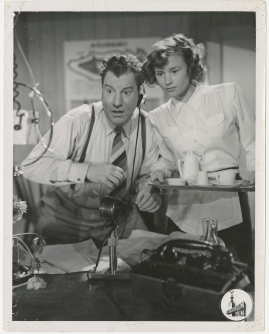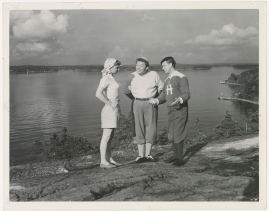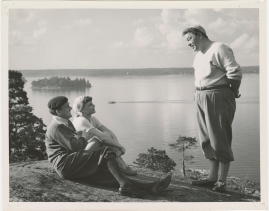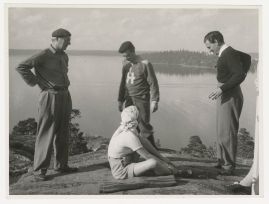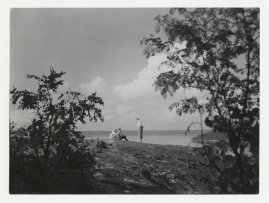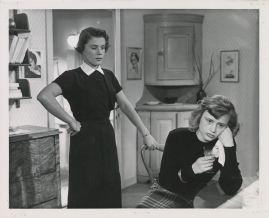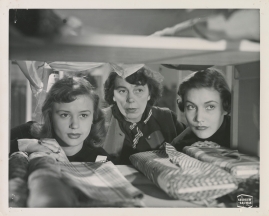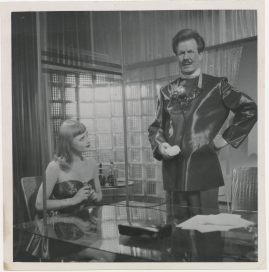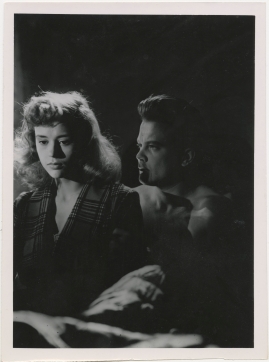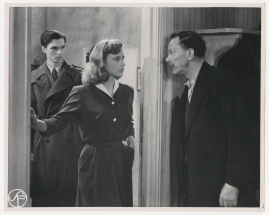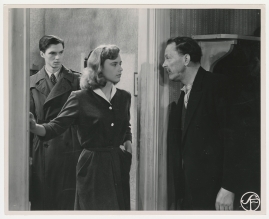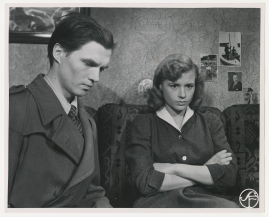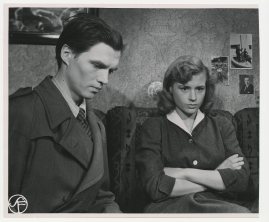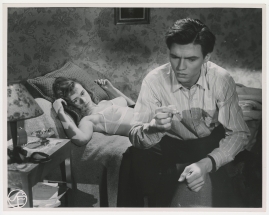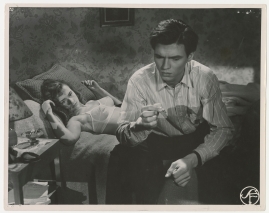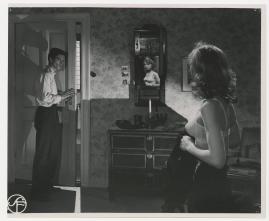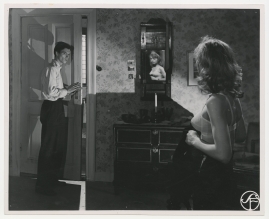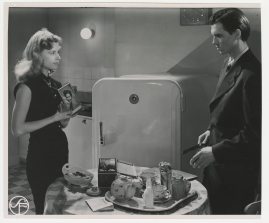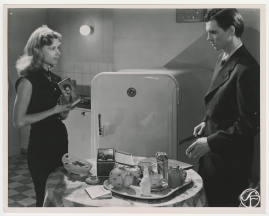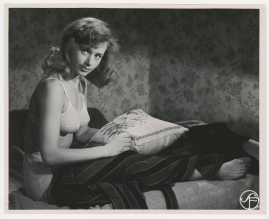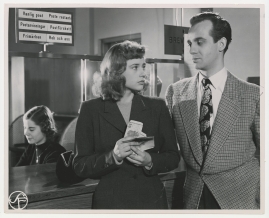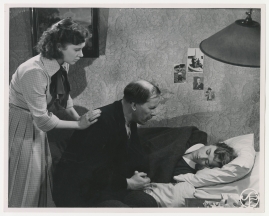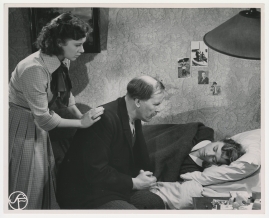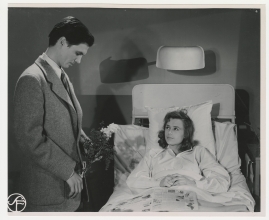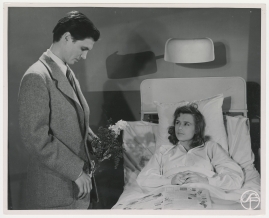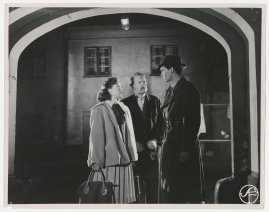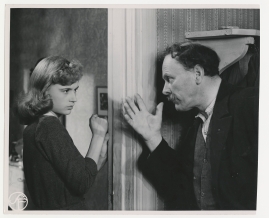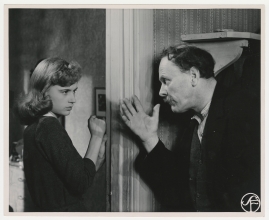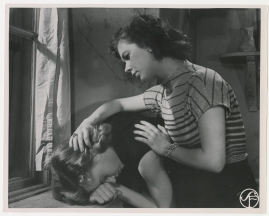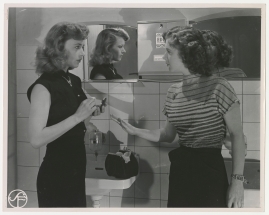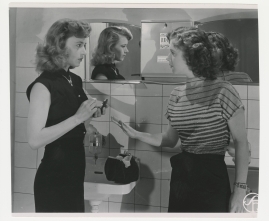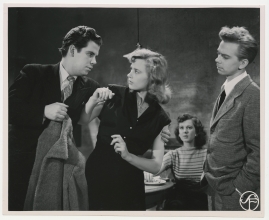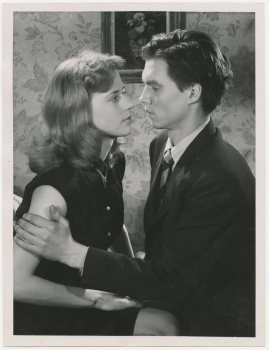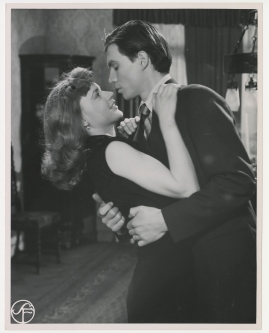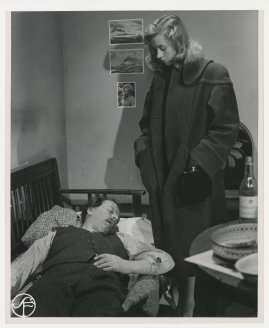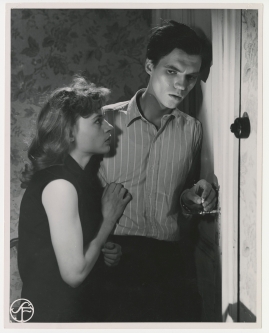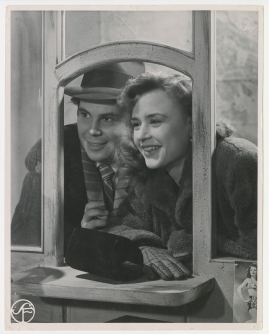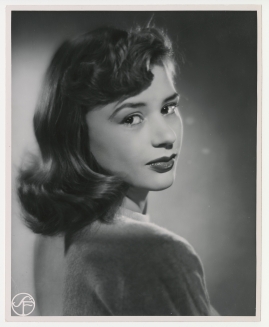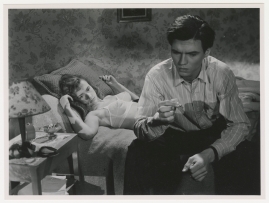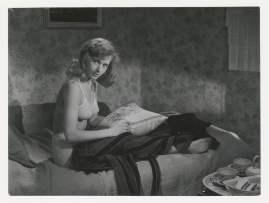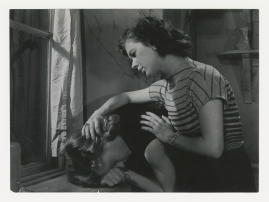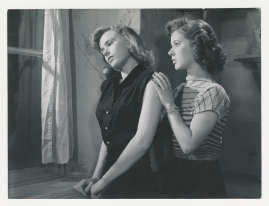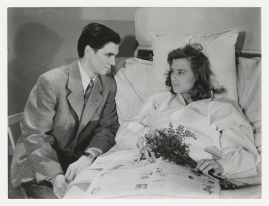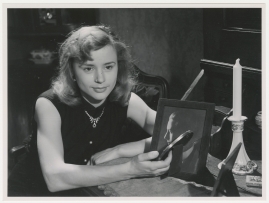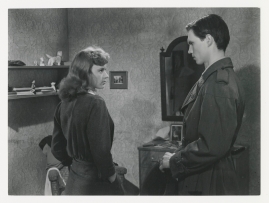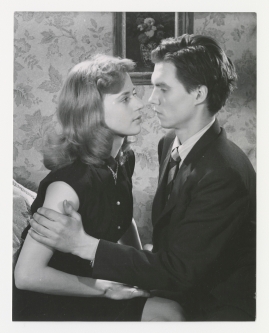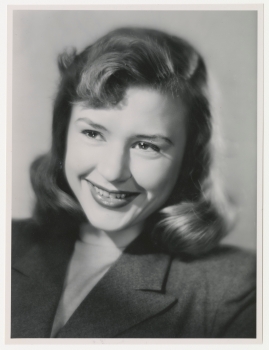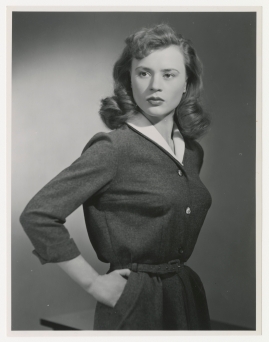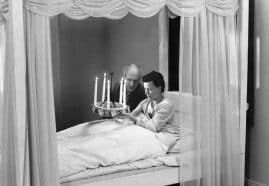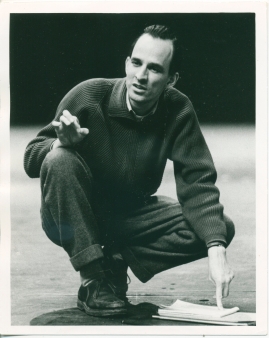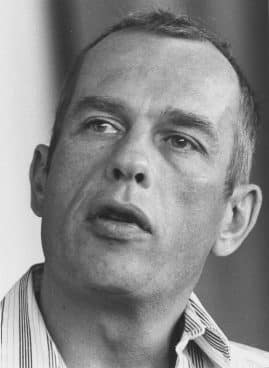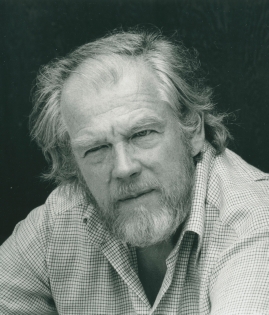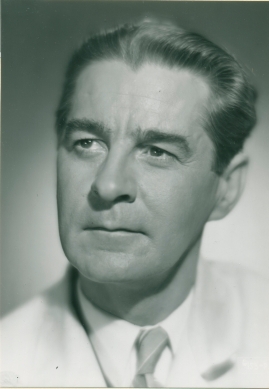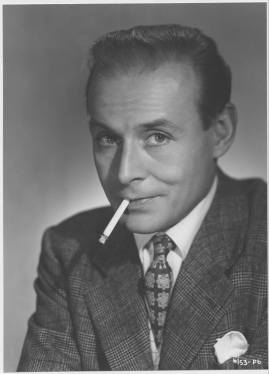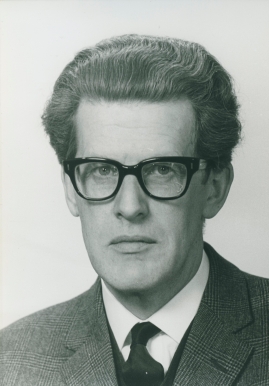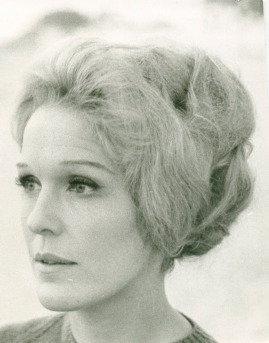Harriet Andersson
Table of contents
- Basic facts
- Links and resources
- Biography
- Awards
- Films
- Original work
- Soundtrack listing
- Groups
Basic facts
Media (56)
| Cast |
|
|---|---|
| Singer | |
| Show all films | |
| Awards |
|
Biography
Swedish actress. Born in Stockholm.-When Harriet Andersson in Summer with Monica (Sommaren med Monika. US title: Monika, the Story of a Bad Girl) stares straight into the camera, something unheard of at the time, she puts herself on a par with young rebels such as Dean, Brando and Elvis, anticipating many of them - and moreover she does so as a young woman. Harriet - she deserves her first name status in the annals of Swedish cinema - was the best (only?) rebel of the day; sassy, sensual and vulnerable - and without any airs and...
Biography
Swedish actress. Born in Stockholm.
-
When Harriet Andersson in Summer with Monica (Sommaren med Monika. US title: Monika, the Story of a Bad Girl) stares straight into the camera, something unheard of at the time, she puts herself on a par with young rebels such as Dean, Brando and Elvis, anticipating many of them - and moreover she does so as a young woman. Harriet - she deserves her first name status in the annals of Swedish cinema - was the best (only?) rebel of the day; sassy, sensual and vulnerable - and without any airs and graces.
The year was 1952. The film's director Ingmar Bergman was not alone in having noticed this breath of fresh air in some otherwise average films of the day such as Mrs. Andersson's Kalle (Anderssonskans Kalle, Rolf Husberg, 1950), Biffen och Bananen ("Steak and Banana", Rolf Husberg, 1951) and While the City Sleeps (Medan staden sover, Lars-Eric Kjellgren, 1950, with a screenplay by Bergman himself). In these she had appeared in increasingly important supporting roles, at first mostly decorative, later with more import. When the writer Per-Anders Fogelström suggested that Bergman might like to film something about girl and a boy who run away together to the Stockholm archipelago, everything fell into place. If the 20-year-old Harriet was meant for something, then that something was Monica.
Summer with Monica took off all over the world; in South America, where elderly critics still remember to this day the sensation it caused; in North America, where young scoundrels such as Woody Allen sneaked in to watch Monika, The Story of a Bad Girl to catch a glimpse of a young girl swimming naked; and in France, where Godard and Truffaut had not as yet created a new wave, but suddenly had a premonition of how it might be done. For many this was their first encounter with Bergman's filmmaking. It would not be their last.
The same applied to Harriet Andersson (who also lived together with Bergman for several years and became a lifelong friend). Their creative partnership spanned four decades on the stage, radio and screen. The ten widely different film roles she played for Ingmar Bergman - among them the naïve circus queen in Sawdust and Tinsel (Gycklarnas afton,1953. alternative US title: The Naked Night), the sulky teenager in A Lesson in Love (En lektion i kärlek, 1954), amorous maid in Smiles of a Summer Night (Sommarnattens leende, 1955), upper class girl dying of cancer in Cries and Whispers (Viskningar och rop, 1973), and care-worn servant in Fanny and Alexander (Fanny och Alexander, 1982), not forgetting her studies of psychotic personalities in Through a Glass Darkly (Såsom i en spegel, 1961) and the TV movie The Blessed Ones (De två saliga, 1985) - account for ten per cent of her filmography. Albeit a small fraction, it is hard to contradict ther assertion that: "Ingmar gave me the most magnificent roles". Bergman himself offered a possible explanation: "I think the camera loves the particles that surround Harriet and that she loves them too." The French called her simply a "creature de cinéma".
Among her other 90 or so film roles one finds everything from fairly standard fare, which she served up during her years under contract to Svensk Filmindustri to the best of her abilities, to interesting encounters with exceptional directors. Of special note are Mai Zetterling's Loving Couples (Älskande par,1964) and The Girls (Flickorna, 1968), but also the five films she made with director Jörn Donner, of which To Love (Att älska, 1964) gained her the award for Best Actress at the 1964 Venice Film Festival.
It is hardly surprising that an actress of her calibre should have received offers for international roles, but not so many as she might have wished, perhaps partly to do with timing and certain language difficulties. She was well cast as James Mason's frivolous wife in Sidney Lumet's film version of John le Carré's "The Deadly Affair" (The Deadly Affair, 1967), and was fun to watch as a Byzantine princess in a film not theatrically distributed in Sweden: Struggle for Rome (Kampf um Rom I and Kampf um Rom II - Der Verrat, Robert Siodmak, 1968-1969). Nobody to this day knows how she got on as Jerry Lewis' wife in his abortive "The Day the Clown Cried" (an unreleased film Lewis shot in Sweden in the early 1970s). She herself recalls an uncomfortable shoot. She has fared better in Sweden's neighbouring countries; the Danish film People Meet (Mennesker mødes og sød musik opstår i hjertet, Henning Carlsen, 1967. US title: People Meet and Sweet Music Fills the Heart) won her a Bodil award, and the Norwegian Beyond the Sky (Høyere enn himmelen, Berit Nesheim, 1993) resulted in an Amanda, each award the highest in their respective countries.
A "cinematographic genius" (Bergman once more), she was born into a fairly down-to-earth lower middle class family in Stockholm. Weary of school by the age of 15 she was quick to learn her craft in the capital at the Calle Flygare stage school and as part of the revue at the Oscar theatre. She is also quick to underplay the importance of "method" and her own abilities in the field: "If they say 'silence' then you're quiet, if they say 'start' then you start," is her maxim. She clearly has yet to absorb the considerably more verbose description of such activities imparted by Stanislavski.
Jan Lumholdt (2013)
Awards
| Prize | Stockholm | 2010 | Stockholm lifetime Achievement award | ||
|---|---|---|---|---|---|
| The Guldbagge Award | Stockholm | 2009 | Lifetime Achievement Award | ||
| Nominated for the Guldbagge Award | Stockholm | 2000 | Best Actress in a Leading Role | ||
| Festival Award | Haugesund | 1994 | (bästa skådespelerska) | ||
| The Robert Award (Denmark) | Copenhagen | 1989 | (bästa kvinnliga biroll) | ||
| Festival Award | St. Thomas | 1976 | (bästa kvinnliga huvudroll) | ||
| Moscow | 1975 | (bästa kvinnliga huvudroll, t.m. Fatima Bouamari) | |||
| Prize | Stockholm | 1973 | (1972 års SF-stipendium) | ||
| The Guldbagge Award | Stockholm | 1973 | Best Actress in a Leading Role | ||
| Bodil (Denmark) | Copenhagen | 1967 | (bästa skådespelerska /i dansk film/) | ||
| Chaplin Magazine Award | Stockholm | 1964 | |||
| Coppa Volpi | Venice | 1964 | |||
| Prize | 1963 | (tyska filmkritikens pris för hennes roll) | |||
| Swedish Film Society Prize | Stockholm | 1962 | (diplom för hennes roll) | ||
| Folket i Bild Magazine Award | Stockholm | 1955 | (bästa kvinnliga biroll) | ||
| Swedish Film Society Prize | Stockholm | 1955 | (plakett) |
